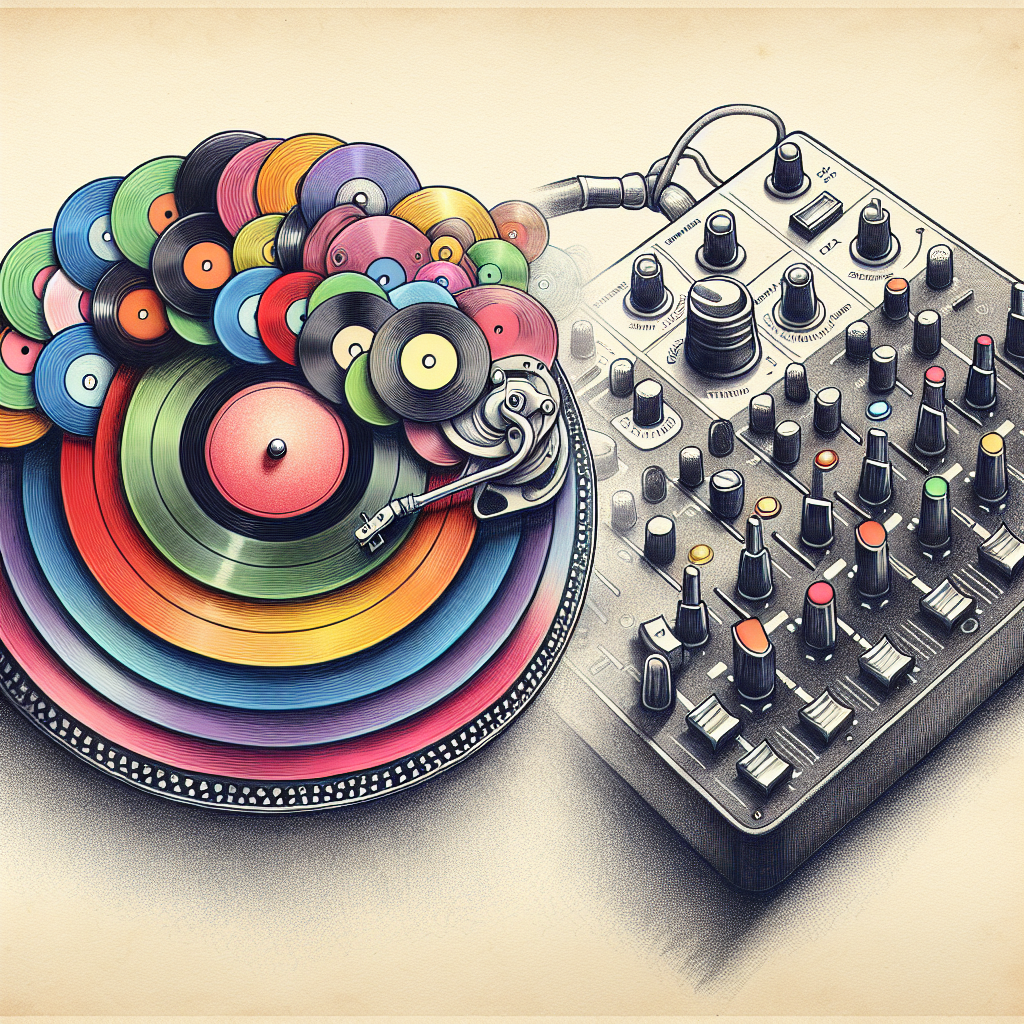
Imagine this scenario: you’re hosting a party and want to create the perfect playlist that seamlessly blends one catchy tune into the next. But the question remains, how do you combine songs together in a way that keeps the energy high and the dance floor packed? In this article, we’ll explore some simple yet effective techniques that will have you effortlessly transitioning from one beat to another, ensuring a non-stop flow that will keep your guests grooving all night long. Get ready to become the ultimate DJ of your own party!

Understanding the Purpose of Combining Songs
Combining songs is a popular technique used by DJs, music producers, and even casual music enthusiasts. It allows you to create seamless transitions between songs, crafting a cohesive and flowing playlist. Whether you’re creating a DJ set, a mashup, or a continuous mix for a party, understanding the purpose behind combining songs is essential.
When you combine songs, you have the power to control the energy and atmosphere. By carefully selecting and arranging songs, you can create a dynamic and engaging listening experience. Combining songs is not just about playing one song after another; it’s about curating a playlist that takes the listener on a journey, from one mood to another, keeping them captivated and entertained throughout.
Choosing the Right Software or Tool
Before diving into the process of combining songs, it’s essential to choose the right software or tool. There are various options available, both free and paid, catering to different skill levels and needs. Some popular software includes VirtualDJ, Serato DJ, Traktor Pro, Ableton Live, and Mixxx.
When choosing a software, consider your preferences and requirements. Do you need real-time mixing capabilities, advanced effects, or a user-friendly interface? Research and experiment with different tools to find the one that suits your style and objectives.
Organizing and Preparing Your Songs
To combine songs effectively, it’s crucial to organize and prepare your music library beforehand. Start by creating playlists or folders to categorize your songs based on genre, mood, or tempo. This organization will make it easier to find and select songs when creating your mix.
Additionally, ensure that all your songs have proper metadata, including artist name, track title, and BPM (beats per minute). BPM information is particularly important for beatmatching and creating seamless transitions, so be sure to double-check and update any missing or inaccurate BPM data.
Adjusting Tempo and Key
A crucial aspect of combining songs is adjusting the tempo and key to ensure a smooth and harmonious transition between tracks. Most software offers features like tempo and key syncing, making this process relatively straightforward.
Start by analyzing the BPM and key of each song individually. Once you have the necessary information, you can use the software’s tools to match the tempos or adjust them gradually throughout your mix. Similarly, harmonically mixing songs by matching their keys can enhance the overall blend and flow.
Remember, there might be instances where abrupt tempo or key changes can create a desired effect, so don’t be afraid to experiment and trust your instincts as well.

Using Crossfades and Transitions
One of the key techniques used to combine songs seamlessly is the use of crossfades and transitions. Crossfading involves fading out the current song while simultaneously fading in the next one, creating a smooth and uninterrupted transition. This technique ensures that there are no sudden stops or awkward silences between tracks.
Most DJ software provides automatic crossfading options, allowing you to adjust parameters like fade duration and curve shape. However, for more precise control, manual crossfading using the software’s mixer is recommended. Experiment with different fading techniques to determine the best approach for each song combination.
Creating Smooth Transitions and Segues
While crossfading helps with transitions, creating smooth transitions and segues involves more precise selection and positioning of songs within your mix. Pay attention to the outro and intro sections of each track, as they play a vital role in maintaining the flow.
Look for naturally compatible sections in songs that have similar energy, instruments, or structure. By aligning these sections, you can create smooth transitions that feel like a natural progression. Remember to use your ears and listen for any potential clashes or abrupt changes in energy.
Beatmatching and Mixing Songs
Beatmatching is a fundamental technique in DJing that involves synchronizing the beats of two or more songs. This technique ensures that the rhythm and timing of the songs align, creating a seamless transition between tracks.
Most DJ software provides automatic beatmatching features, but manually beatmatching can give you more control and precision. Begin by focusing on the drum patterns and aligning the beats of the two songs. Use the software’s tools, such as pitch adjusters and visual waveforms, to help you match the beats accurately.
Once you have successfully beatmatched the songs, you can experiment with creative mixing techniques like blending the basslines, introducing filters or effects, and gradually fading in or out different elements of the songs.
Adding Effects and Enhancements
To elevate your combined songs, consider adding effects and enhancements. Popular effects include reverb, delay, filter sweeps, and EQ adjustments, which can add depth and texture to your mix. Experiment with different effects during the transitions or layer them subtly throughout the songs to create unique sonic landscapes.
It’s important to strike a balance between using effects to enhance the songs without overpowering or distracting from the original recording. Effects should complement the music and contribute to the overall atmosphere you’re trying to create.
Editing and Arranging the Combined Songs
After combining your songs, take the time to listen to the entire mix and make any necessary edits or adjustments. Trim any unnecessary intros or outros, remove any unwanted glitches or mistakes, and tidy up any abrupt transitions. This editing process ensures that your mix flows smoothly and maintains the desired energy and mood.
When arranging your combined songs, consider the overall structure of the mix. Begin with an attention-grabbing opening that sets the tone, build up the energy gradually, create peaks and valleys, and end with a satisfying conclusion. Experiment with different track orders and transitions to find the arrangement that works best for your mix.
Exporting and Sharing the Combined Songs
Once you are satisfied with your combined songs, it’s time to export and share your creation. Most software allows you to export your mix as a high-quality audio file, such as WAV or MP3. Choose the appropriate file format based on your intended use, whether it’s sharing online, burning to a CD, or playing at a live event.
Before sharing, consider adding metadata to your mix, including the artist name, mix title, and tracklist. This information helps give credit to the original artists and allows listeners to discover and support their work.
Now that you have a comprehensive understanding of how to combine songs together, it’s time to unleash your creativity and start crafting unforgettable mixes. Remember, practice and experimentation are key to mastering this skill, so have fun and enjoy the process!
